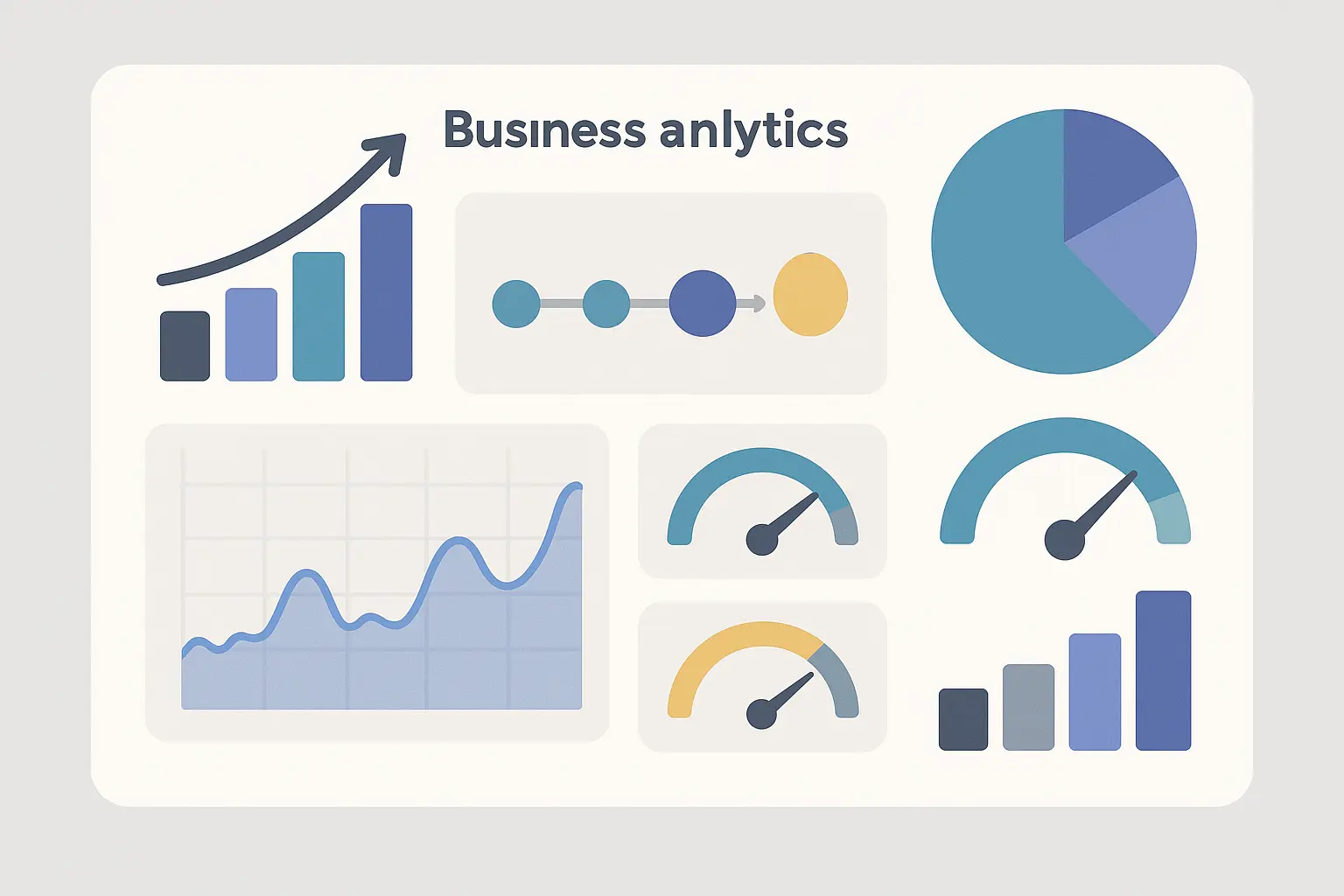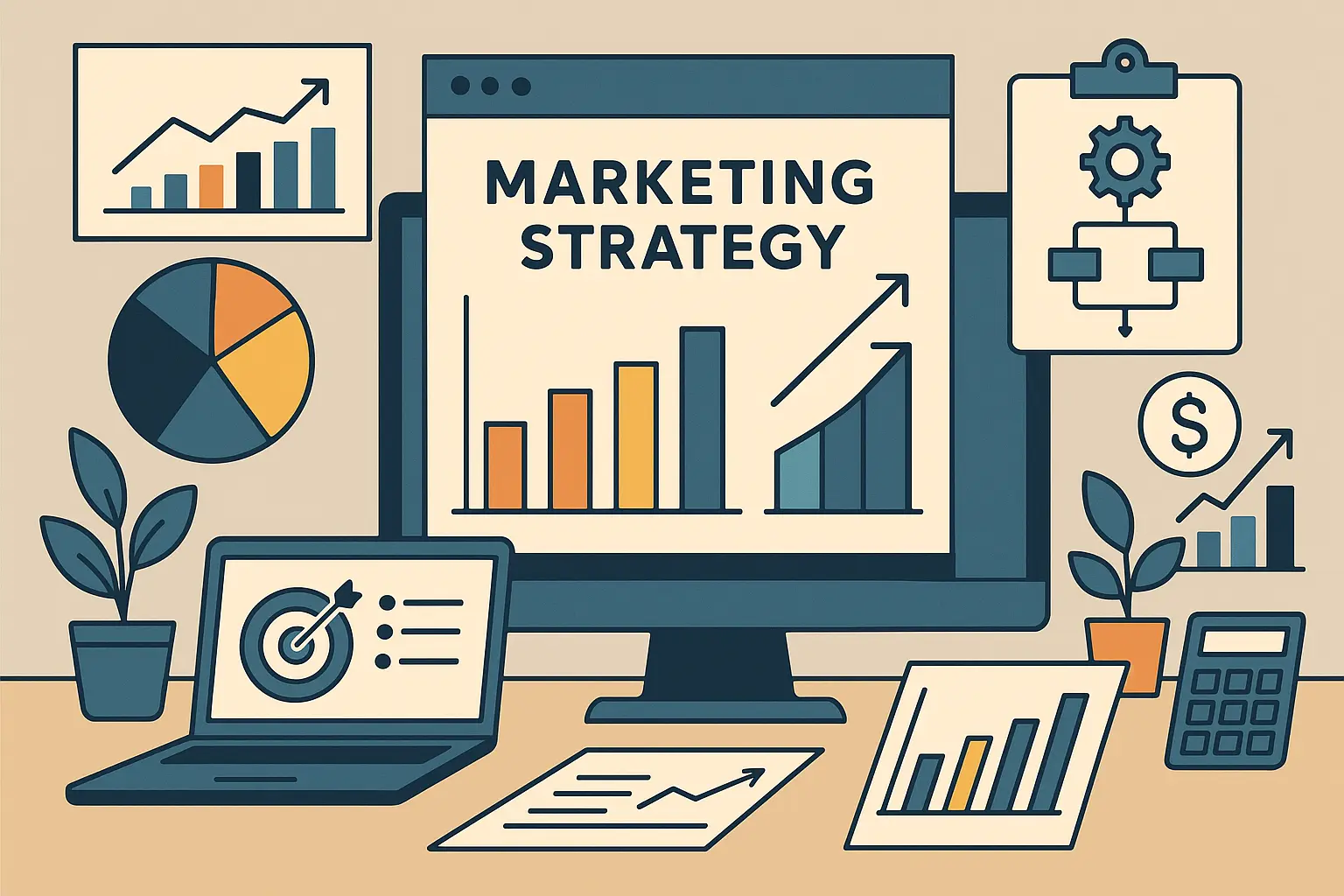I’ll be honest – when I first heard about Spotify’s “squad model” at a conference three years ago, I rolled my eyes a little. Teams working autonomously but staying aligned? No traditional hierarchy? It sounded like another Silicon Valley fairy tale that would crash and burn in the real world.
But here’s what surprised me most – it actually worked. Not just for Spotify, but for hundreds of other companies I started digging into. From banks completely blowing up their org charts to government agencies (yes, government!) breaking decades of bureaucracy, agile transformations are happening everywhere. And the results? They’re not just feel-good stories – they’re backed by hard data.
I’ve spent months analyzing these success stories, and what I found will probably change how you think about organizational change. These aren’t just transformation tales designed to make consultants rich; they’re real case studies with measurable outcomes that you can actually learn from.

Table of Contents
-
What Makes an Agile Transformation Case Study Worth Your Time
-
Enterprise Technology Companies Leading the Charge
-
Financial Services Breaking Traditional Barriers
-
Retail and E-commerce Putting Customers First
-
Manufacturing and Automotive Revolutionizing Production
-
Healthcare and Life Sciences Balancing Innovation with Compliance
-
Government and Public Sector Transforming Bureaucracy
-
Deep Dive Analysis: When Transformations Really Work
-
How These Lessons Apply to Your Marketing Strategy
TL;DR
-
Microsoft went from 3-year deployment cycles to 3 weeks by getting 40,000+ engineers to stop fighting each other
-
ING Bank literally threw out their org chart, created 350+ small teams, and somehow got 50% faster at building products
-
Spotify’s squad model kept them feeling like a startup while scaling to 400M+ users (though they’ve tweaked it about a dozen times since)
-
Government agencies like UK’s GDS saved £4B+ by applying startup thinking to citizen services
-
The secret sauce? Strong leadership, measuring everything, and actually caring about what customers want
-
Most successful transformations focus on delivering value, not just following processes
-
Cross-functional teams and data-driven decisions are non-negotiable for long-term success
What Makes an Agile Transformation Case Study Worth Your Time
Look, I’ve been in this industry long enough to be skeptical of transformation success stories. You’ve probably read dozens that left you wondering, “But did it actually work, or are they just really good at PR?”
The transformations worth studying share five things that separate the real deals from the marketing fluff. First, they tell you exactly what kind of mess they started with – you need to know if their challenges match yours. A startup’s agile journey won’t help a 50,000-person enterprise, and vice versa.
Second, they get specific about their approach. Vague statements about “implementing agile practices” are useless. You want to know which frameworks they used, how they handled the inevitable resistance, and what their timeline actually looked like. Understanding these methodologies becomes even more powerful when combined with advanced analytics for strategic growth, which can help measure transformation success across multiple dimensions.
Organizational Context and Scale
Size absolutely matters when you’re evaluating transformations. Microsoft’s shift of 40,000+ engineers offers completely different lessons than a 50-person startup’s agile adoption. Industry matters too – a bank’s regulatory constraints create unique challenges that don’t exist in software companies.
The transformation scope tells you about complexity. Enterprise-wide changes require different strategies than department-level implementations. And here’s something most people ignore – starting maturity levels matter significantly. Organizations beginning with zero agile experience face different hurdles than those expanding existing practices.
|
Evaluation Criteria |
What to Look For |
Red Flags |
|---|---|---|
|
Organizational Context |
Clear company size, industry, and starting maturity level |
Vague descriptions of “large enterprise” or “mid-sized company” |
|
Methodology Details |
Specific frameworks used (SAFe, Scrum, Kanban), timeline, and implementation approach |
Generic statements about “agile adoption” without specifics |
|
Measurable Outcomes |
Quantified results with before/after metrics |
Subjective claims without data backing |
|
Sustainability Evidence |
Results maintained over 2+ years with continued improvement |
One-time improvements that weren’t sustained |
|
Replicable Processes |
Clear steps others can follow and adapt |
Unique circumstances that can’t be replicated elsewhere |
Transformation Approach and Methodology
Framework selection reveals whether they actually thought this through. SAFe works well for large enterprises that need coordination, while the Spotify model suits organizations that value autonomy over control. Custom frameworks often indicate mature organizations adapting proven practices to their unique mess.
Change management strategy separates successful transformations from expensive failures. The best case studies detail how they addressed cultural resistance, managed communication, and maintained momentum when everything felt like it was falling apart.
Measurable Outcomes and ROI
Numbers don’t lie, but people sure do manipulate them. The most credible case studies provide specific metrics: deployment frequency improvements, customer satisfaction scores, employee engagement data, and actual financial impact. Vague claims about “improved collaboration” aren’t worth the pixels they’re displayed on.
Look for both leading and lagging indicators. Leading indicators (like deployment frequency) predict future success, while lagging indicators (like revenue growth) confirm long-term impact. Organizations serious about measuring transformation success should consider implementing comprehensive ROI tracking systems to quantify their agile transformation benefits.

Enterprise Technology Companies Leading the Charge
Tech companies face a unique problem: they must innovate constantly while scaling operations. The successful ones treat agile transformation as a competitive advantage, not just a process improvement they can delegate to HR.
1. Microsoft’s DevOps and Agile Transformation
Microsoft’s transformation story reads like organizational science fiction. They shifted 40,000+ engineers from waterfall to agile practices while completely changing their company culture from “know-it-all” to “learn-it-all.” If you’ve ever worked at a large tech company, you know how impossible this sounds.
The numbers are staggering: 95% reduction in deployment time and 50% faster feature delivery. But here’s what really impressed me – they went from deploying updates every three years (yes, THREE YEARS) to pushing changes live multiple times per day. Imagine waiting three years to fix a typo on your website – that’s what they were dealing with.
Their approach centered on DevOps integration with agile practices. They didn’t just change processes; they rebuilt their entire technical infrastructure to support rapid iteration and continuous feedback. More importantly, they stopped treating development and operations like separate kingdoms that only communicated through angry emails.
Microsoft’s transformation began with a single team in their Azure division. Instead of mandating company-wide change, they created a pilot program where one team adopted DevOps practices and continuous integration. Within six months, this team was deploying code 10 times more frequently than traditional teams while maintaining higher quality standards. The success was so dramatic that other teams began requesting to join the program. This organic adoption approach proved more effective than top-down mandates, eventually spreading to all 40,000+ engineers through voluntary participation rather than forced compliance.
2. Adobe’s Creative Cloud Agile Journey
Adobe faced an existential challenge: transitioning from perpetual software licenses to subscription-based SaaS while maintaining their creative software leadership. Their agile transformation enabled this business model shift, which could have killed the company if they’d screwed it up.
They reorganized 3,000+ developers into cross-functional teams using a Spotify-inspired model with tribes and squads. The results speak volumes: 23% annual revenue growth and 90% customer satisfaction improvement. Not bad for a complete business model overhaul.
What makes Adobe’s story compelling is how they aligned agile practices with business strategy. The transformation wasn’t just about faster development; it enabled an entirely new revenue model that keeps customers paying monthly instead of buying once and disappearing for three years.
3. Atlassian’s Scaled Agile Framework Implementation
Atlassian had a unique advantage: they used their own tools (Jira, Confluence) to manage their transformation. This created a feedback loop where they improved their products while improving their processes. Talk about eating your own dog food.
Their implementation of OKRs (Objectives and Key Results) with agile practices created alignment without sacrificing autonomy. Teams knew their objectives but had freedom in execution methods – a balance most companies struggle with.
Results included 40% faster product releases and 60% improvement in team autonomy. They proved that scaling agile doesn’t require sacrificing the speed and flexibility that makes agile valuable in the first place.
4. Salesforce’s Agile at Scale
Salesforce built agile practices into their organizational DNA from early stages, which helped them maintain startup agility while becoming an enterprise software giant. Their V2MOM framework (Vision, Values, Methods, Obstacles, Measures) aligns with agile principles without being dogmatic about it.
They’ve sustained 25% annual growth over multiple years by treating agile as a business strategy, not just a development methodology. Quarterly business reviews align with agile sprints, creating organizational rhythm that actually makes sense.

Financial Services Breaking Traditional Barriers
Banking and financial services represent the ultimate agile transformation challenge. These organizations must balance innovation with regulation, speed with security, and customer demands with compliance requirements. If you’ve ever worked in banking, you know how soul-crushing the approval process can be.
5. ING Bank’s Agile Operating Model
ING’s transformation ranks among the most radical organizational changes in banking history. They did something that would make most CEOs break out in a cold sweat – they completely blew up their org chart. Gone were the traditional departments. Gone were most of the middle managers. In their place? 350 small, autonomous teams that could actually get things done without asking permission from five different layers of management.
The scope was breathtaking: 45,000 employees globally restructured over two years. They removed traditional middle management layers and introduced new roles like tribe leads and coaches. ING’s transformation sounds crazy on paper, and honestly, it probably was a little crazy.
Results validated their bold approach: 50% faster product development, 30% increase in customer satisfaction (NPS improved from 31 to 45), and 20% improvement in employee engagement. They proved that even highly regulated industries can embrace radical organizational change without everything falling apart.
ING’s transformation wasn’t just about reorganizing teams – they completely reimagined how banking products are developed. Before transformation, launching a new savings account took 18 months and involved 12 different departments. After restructuring into cross-functional tribes, the same product launch takes 6 weeks. A single tribe now includes everyone needed: product managers, developers, compliance experts, risk managers, and customer experience designers. When they launched their mobile payment feature, the tribe could make decisions and implement changes in real-time based on customer feedback, something impossible under their previous departmental structure.
6. Capital One’s Cloud and Agile Transformation
Capital One made a strategic bet that few banks were willing to make: they went “all-in” on cloud infrastructure and agile methodologies simultaneously. This dual transformation created competitive advantages that traditional banks struggle to match, mainly because most banks are still arguing about whether the cloud is “safe enough.”
Their migration to AWS cloud infrastructure enabled DevOps practices across all technology teams. The results were impressive: 6x increase in deployment frequency and 50% reduction in incident resolution time. When your competitors are still deploying quarterly, deploying daily becomes a serious competitive advantage.
What sets Capital One apart is their willingness to embrace technology practices typically associated with startups, not banks. They treated technology as a core competency, not just a support function that gets outsourced to the lowest bidder.
7. Barclays Digital Transformation
Barclays recognized that fintech startups were threatening traditional banking through superior customer experience and faster innovation. Their response involved creating digital labs and innovation centers that operated with startup-like agility while somehow staying compliant with banking regulations.
They implemented design thinking alongside agile development, ensuring that customer needs drove technical decisions. This customer-centric approach resulted in 40% reduction in time-to-market for new products. In banking terms, that’s the difference between launching a feature this quarter versus next year.
8. JPMorgan Chase’s Agile Journey
As the largest US bank, JPMorgan Chase faced unique scaling challenges. They trained 20,000+ technologists in agile practices while implementing the Scaled Agile Framework (SAFe) across their technology organization. When you’re that big, even small changes become massive undertakings.
Their focus on delivery predictability (35% improvement) reflects banking’s need for reliability alongside agility. They proved that large, complex organizations can achieve agile benefits without sacrificing operational stability – something regulators actually care about.

Retail and E-commerce Putting Customers First
Retail companies live or die by customer satisfaction and market responsiveness. Their agile transformations focus intensely on customer value and rapid adaptation to market changes. These customer-focused approaches align perfectly with modern continuously learning systems that adapt in real-time to customer behavior patterns.
9. Spotify’s Squad Model
Spotify created what became known as the “Spotify Model” – autonomous squads organized into tribes, with chapters and guilds providing knowledge sharing. This model influenced countless other organizations’ agile transformations, though most companies miss the cultural foundation that makes it work.
With 30+ tribes and 250+ squads operating with minimal hierarchy, they maintained startup agility while scaling to 400M+ users. Their culture of experimentation and rapid iteration became legendary in the agile community, though they’ve tweaked the model about a dozen times since everyone started copying it.
What makes Spotify’s model remarkable isn’t just the structure, but their commitment to continuous evolution. They regularly adapt their organizational design based on what they learn, instead of treating their initial approach as gospel.
|
Spotify Organizational Element |
Purpose |
Key Benefit |
|---|---|---|
|
Squad (6-12 people) |
Self-organizing team with specific mission |
Maintains startup agility and ownership |
|
Tribe (up to 100 people) |
Collection of squads working in same business area |
Enables scaling while preserving autonomy |
|
Chapter |
People with similar skills across squads |
Knowledge sharing and professional development |
|
Guild |
Community of interest across the organization |
Innovation and best practice spreading |
|
Minimal Hierarchy |
Few management layers, servant leadership |
Fast decision-making and reduced bureaucracy |
10. Amazon’s Two-Pizza Team Philosophy
Amazon’s approach to agile centers on small, autonomous teams that can be “fed by two pizzas.” This philosophy drives decentralized decision-making and rapid innovation across their massive organization. It’s simple, memorable, and actually works.
Their continuous deployment practices involve thousands of daily releases, enabling rapid response to customer feedback and market changes. This technical capability supports their customer obsession culture, which isn’t just marketing speak – it’s how they actually operate.
Amazon’s success demonstrates how agile practices can scale to enormous organizations without losing the speed and customer focus that drives innovation. The key is maintaining small team autonomy even within massive corporate structures.
11. Zara’s Fast Fashion Agile Supply Chain
Zara revolutionized fashion retail by applying agile principles to their entire supply chain, not just software development. Their 2-week design- to-shelf cycle disrupted an industry built on seasonal collections planned months in advance.
Cross-functional teams spanning design, manufacturing, and retail enable rapid response to fashion trends. They maintain 50% production capacity for in-season adjustments, allowing real-time response to customer preferences. While competitors are stuck with inventory they planned six months ago, Zara can pivot based on what’s actually selling.
Results include 20% higher profit margins than competitors and 85% of products sold at full price versus industry average of 60%. They proved agile principles apply far beyond software development – you just need to think creatively about how to adapt them.
12. Target’s Digital Transformation
Target’s transformation focused on competing with Amazon while leveraging their physical store network. They rebuilt their technology stack using agile methodologies and implemented design thinking for user-centered development. The challenge? Making online and offline experiences work together seamlessly.
Their omnichannel approach required coordination between digital and physical operations, making their agile transformation more complex than pure e-commerce companies. Results included 50% increase in digital sales and improved customer satisfaction scores. They proved you can teach an old retail dog new digital tricks.

Manufacturing and Automotive Revolutionizing Production
Manufacturing companies face unique agile challenges: physical products, safety requirements, and complex supply chains. The successful transformations in this sector show remarkable innovation in adapting agile principles to physical constraints. This is where it gets interesting – applying software concepts to hardware realities.
13. Tesla’s Agile Manufacturing
Tesla applied software development agile principles to automotive manufacturing and design, creating unprecedented innovation velocity in the automotive industry. Their rapid iteration cycles apply to both software and hardware development, which sounds obvious now but was revolutionary in an industry where “rapid prototyping” used to mean building a clay model and staring at it for six months.
Over-the-air updates function as continuous deployment for automotive software, enabling post-purchase feature improvements. This capability fundamentally changes the relationship between manufacturer and customer – your car actually gets better after you buy it.
Tesla achieved the fastest time-to-market for new vehicle models in the industry by treating car development like software development: rapid prototyping, continuous testing, and iterative improvement. Traditional automakers are still figuring out how they pulled this off.
14. General Electric’s Digital Industrial Transformation
GE’s transformation from traditional industrial conglomerate to digital industrial company required massive organizational change. They created GE Digital with startup-like agile teams focused on software and data analytics, essentially building a tech company inside a 100+ year old industrial giant.
Their implementation of lean startup methodology for new product development enabled rapid experimentation and learning. This approach generated $1B+ in software revenue and improved operational efficiency across their industrial operations. Not bad for a company that used to just make jet engines and light bulbs.
15. 3M’s Innovation Through Agile
3M implemented agile practices to accelerate innovation across their diverse business units. Cross-functional innovation teams and rapid prototyping enabled faster response to customer needs. For a company known for Post-it Notes and Scotch tape, this was a significant cultural shift.
Their focus on customer feedback loops and iterative development resulted in 30% faster product development cycles. They proved that agile principles can drive innovation in traditional manufacturing environments where physical constraints matter.
16. Boeing’s Agile Software Development
Boeing’s transformation focused on software development for aerospace and defense applications, where safety and compliance requirements are paramount. They implemented scaled agile practices while maintaining rigorous safety standards – because “move fast and break things” doesn’t work when the things are airplanes.
Their DevSecOps practices ensure secure, compliant development without sacrificing agility. Results included 40% reduction in software development time while maintaining aerospace industry safety standards. When lives depend on your code working perfectly, agile becomes about disciplined iteration, not reckless speed.

Healthcare and Life Sciences Balancing Innovation with Compliance
Healthcare organizations face the ultimate balancing act: accelerating innovation while maintaining patient safety and regulatory compliance. Their agile transformations require careful adaptation of standard practices because “move fast and break things” doesn’t work when the things are people.
17. Philips Healthcare’s Agile Transformation
Philips transformed from traditional medical device manufacturer to health technology solutions provider using agile practices adapted for FDA compliance requirements. Cross-functional teams include clinical experts alongside developers and designers, ensuring medical expertise guides technical decisions.
Their patient-centric approach resulted in 50% faster product development while maintaining regulatory compliance. They proved that agile practices can accelerate healthcare innovation without compromising safety – you just need to be smarter about how you implement them.
18. Johnson & Johnson’s Digital Health Initiatives
J&J created JLABS innovation hubs that operate with agile methodologies while maintaining pharmaceutical industry standards. Their implementation of design thinking ensures patient-centric solutions drive technical development rather than the other way around.
Results include 25+ digital health solutions launched through their agile innovation process. They demonstrate how large pharmaceutical companies can embrace startup-like innovation practices without throwing away decades of regulatory expertise.
19. Kaiser Permanente’s IT Transformation
Kaiser Permanente’s IT transformation focused on improving patient care through better technology systems. They implemented Epic EHR system using agile methodologies while creating cross-functional teams including clinicians. The key insight? Doctors need to be part of the development process, not just end users who get trained later.
Their approach resulted in improved patient satisfaction scores and operational cost savings. They showed how healthcare IT transformations can improve both patient outcomes and operational efficiency when done thoughtfully.
Kaiser Permanente’s agile transformation tackled one of healthcare’s biggest challenges: making electronic health records actually useful for doctors. Their cross-functional teams included physicians, nurses, IT developers, and patient experience designers working together in two-week sprints. Instead of the traditional approach where IT builds systems and then trains doctors to use them, physicians participated directly in development. When they discovered that emergency room doctors were spending 4 minutes navigating to patient allergy information, the team redesigned the interface in the next sprint to display critical information immediately. This collaborative approach reduced average patient consultation time by 15% while improving care quality.

Government and Public Sector Transforming Bureaucracy
Government agile transformations face unique obstacles: bureaucratic processes, political pressures, and public accountability. The successful cases demonstrate remarkable potential for improving citizen services. Working with government agencies taught me something important – bureaucracy isn’t always the enemy. Sometimes those “slow” processes exist because someone’s life depends on getting it right.
20. UK Government Digital Service (GDS)
The UK government’s digital transformation created GOV.UK as a single government website and implemented agile delivery teams across government departments. Their user-centered design approach prioritized citizen needs over internal processes, which was revolutionary for government work.
Results include £4B+ in cost savings and improved citizen satisfaction with government services. They proved that agile practices can work in highly bureaucratic environments when properly implemented. The UK’s GDS figured out how to keep the safety net while cutting the red tape.
21. US Digital Service (USDS)
The US government created a startup-like organization to transform critical government IT projects. Their rapid response teams applied private sector agile practices to government challenges, most notably fixing Healthcare.gov after its disastrous launch.
Their success in improving veteran services and other critical systems demonstrated the potential for agile practices in government environments. Sometimes it takes an outside team to show what’s possible when you stop accepting “that’s how we’ve always done it” as an answer.
22. Australian Digital Transformation Agency
Australia implemented a whole-of-government approach to digital transformation, integrating user research and design thinking with agile development practices. Their citizen-centered approach resulted in improved service delivery times and significant cost savings.
The Australian approach shows how national governments can coordinate agile practices across multiple agencies without losing the benefits of decentralized decision-making.
23. City of Boston’s Digital Transformation
Boston created innovation teams within city government that operate with startup-like agility. They implemented rapid prototyping for city services, enabling faster response to citizen needs while maintaining public accountability.
Results include improved citizen engagement and operational efficiency. They demonstrated how local governments can embrace innovation while maintaining the transparency and accountability citizens expect.
24. Singapore’s Smart Nation Initiative
Singapore implemented agile practices across government agencies to build smart nation infrastructure. Cross-agency collaboration using agile frameworks enabled rapid experimentation and scaling of successful initiatives.
Their approach resulted in world-leading digital government services and improved citizen satisfaction with government interactions. Singapore proves that government can be both agile and effective when leadership commits to change.
25. Canada’s Digital Government Transformation
The Canadian government created digital service teams within government departments, implementing open source and agile development practices. Their focus on accessibility and citizen needs resulted in faster service delivery and improved user experience.
Canada’s approach shows how federal governments can implement agile practices while respecting provincial jurisdictions and maintaining democratic accountability.

Deep Dive Analysis: When Transformations Really Work
After analyzing these 25 case studies, clear patterns emerge. The most successful transformations share specific characteristics that transcend industry boundaries and organizational size. Here’s what really caught my attention – it wasn’t the impressive numbers, though they are impressive, but how these companies handled the messy, human side of change.
The Leadership Factor
Every successful transformation had unwavering leadership commitment. ING’s CEO Ralph Hamers championed their radical restructuring. Microsoft’s Satya Nadella drove cultural change from the top. This isn’t just executive sponsorship – it’s active, visible leadership throughout the transformation.
Leaders in successful transformations communicate vision consistently, remove organizational barriers, and model the behaviors they want to see. They treat agile transformation as strategic imperative, not operational improvement they can delegate to middle management.
Measurement and Metrics
Organizations that succeed measure everything obsessively. They establish baseline metrics before transformation and track progress religiously. Microsoft measured deployment frequency, ING tracked customer satisfaction, Spotify monitored team autonomy. The cynic in me wanted to know if these numbers were real or just creative accounting.
The best transformations use both leading indicators (deployment frequency, team satisfaction) and lagging indicators (revenue growth, customer retention). This dual approach enables course correction during transformation while validating long-term success. Organizations can leverage comprehensive audit frameworks to establish these baseline measurements and track transformation progress effectively.
|
Success Factor |
Leading Organizations |
Key Metrics |
Transformation Impact |
|---|---|---|---|
|
Leadership Commitment |
Microsoft, ING, Spotify |
Executive time invested, change resistance addressed |
40-60% faster adoption rates |
|
Measurement Framework |
Amazon, Capital One, Tesla |
Deployment frequency, customer satisfaction, team velocity |
2-3x improvement in key performance indicators |
|
Cultural Change Management |
Adobe, J&J, UK GDS |
Employee engagement, training completion, retention rates |
50-70% reduction in transformation resistance |
|
Customer-Centric Focus |
Zara, Kaiser Permanente, Singapore |
Customer satisfaction, time-to-market, service quality |
30-50% improvement in customer metrics |
|
Cross-Functional Collaboration |
Atlassian, 3M, Boston City |
Team autonomy scores, cross-team projects, knowledge sharing |
25-40% faster problem resolution |
Cultural Change Management
Technical process changes are relatively easy. Cultural transformation is where most organizations struggle and where the real magic happens. The successful cases invested heavily in change management, communication, and employee development.
ING retrained existing employees rather than replacing them. Microsoft created learning programs for 40,000+ engineers. They treated people as assets to develop, not obstacles to overcome. This approach takes longer but creates sustainable change.
Customer-Centric Focus
The most successful transformations maintain relentless focus on customer value. Amazon’s customer obsession, Zara’s fashion responsiveness, UK GDS’s citizen-centered design – they all prioritize end-user value over internal efficiency metrics.
This customer focus provides clear decision-making criteria during transformation. When teams face difficult choices, customer value becomes the tiebreaker. It’s simple in theory but surprisingly hard to maintain in practice.
How These Lessons Apply to Your Marketing Strategy
The principles driving these successful transformations mirror what effective marketing requires today. Data-driven decision making, iterative improvement, and customer-centric thinking aren’t just agile concepts – they’re marketing fundamentals that too many teams ignore.
Consider how ING Bank used customer feedback loops to drive their transformation. Modern marketing demands the same approach: continuous testing, measurement, and optimization based on real customer data rather than assumptions and gut feelings.
Microsoft’s shift from three-year cycles to continuous deployment reflects what marketing teams need today. Whether you’re running PPC campaigns, email marketing, or content strategies, the ability to iterate quickly based on performance data determines success. This iterative approach becomes even more powerful when combined with AI-powered optimization tools that can accelerate the testing and learning cycles.
Cross-functional collaboration, which made transformations successful at companies from Spotify to Tesla, applies directly to marketing. SEO, PPC, email marketing, and content creation work best when integrated rather than operating in silos where teams fight over attribution credits.
The Marketing Agency applies these same agile principles to deliver measurable ROI for clients. Their scientific approach to market analysis mirrors how successful agile transformations use data to drive decisions. Performance-focused measurement across all marketing channels – from $500/month inbound marketing programs to $10,000/month comprehensive campaigns – reflects the metrics-driven approach that made these transformations successful.
Organizations implementing agile transformations can accelerate their marketing results by partnering with agencies that understand these principles. The same iterative improvement, customer-centric focus, and data-driven optimization that transformed global enterprises can transform your marketing performance. Don’t expect overnight miracles though – most of these transformations took 18-24 months to really click, and that’s with full executive support and unlimited budgets.
Ready to apply agile principles to your marketing strategy? The Marketing Agency’s performance-focused approach can help you achieve the same measurable results these case studies demonstrate.

Final Thoughts
These 25 case studies prove that agile transformation isn’t just possible – it’s essential for staying competitive in today’s rapidly changing business environment. From Microsoft’s 40,000-engineer transformation to Boston’s city government innovation, the evidence is clear: organizations that embrace agile principles outperform those that don’t.
The bottom line? If a 150-year-old bank can do this, your company probably can too. The most important lesson isn’t about specific frameworks or methodologies. It’s about mindset. The organizations that succeeded treated agile transformation as a fundamental shift in how they operate, not just a new set of processes to follow.
Look, I’m not going to sugarcoat this – agile transformation is hard work. It’s messy, political, and half your team will resist it. But if a bunch of government bureaucrats can figure it out, so can you. Start small, measure everything, and don’t let perfect be the enemy of good enough.
Whether you’re planning an enterprise-wide transformation or looking to improve your marketing performance, these case studies provide a roadmap. Focus on customer value, measure everything, invest in your people, and never stop iterating. The results speak for themselves.
If you’re thinking about starting your own transformation, here’s my honest advice: pick one small team, give them permission to experiment, and see what happens. Don’t bet the company on a methodology you read about in a blog post (even this one). But do pay attention to what works and scale it thoughtfully.



